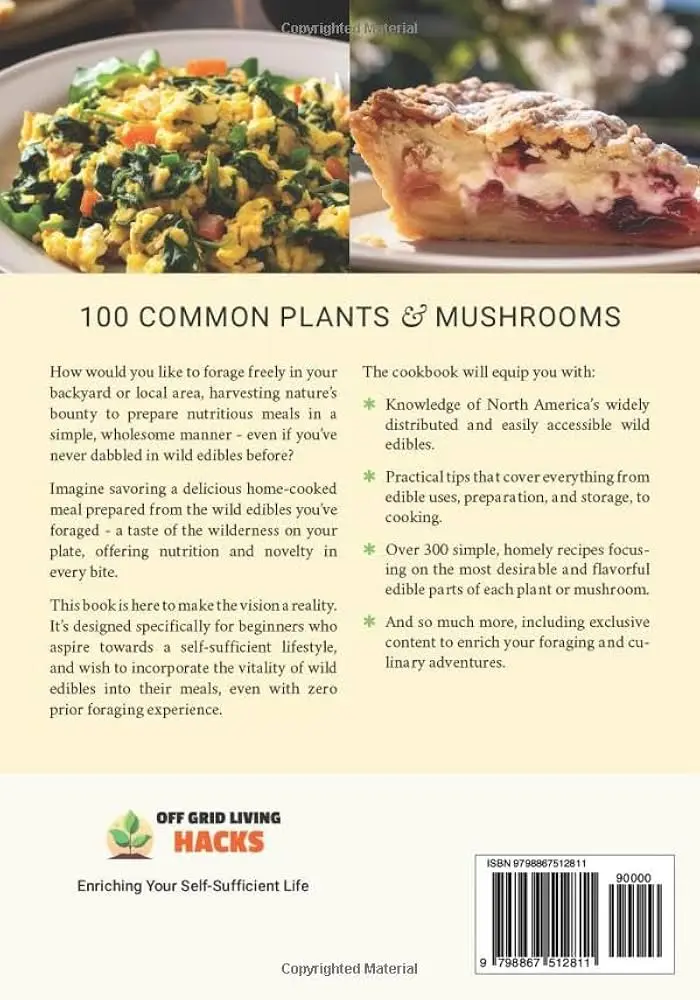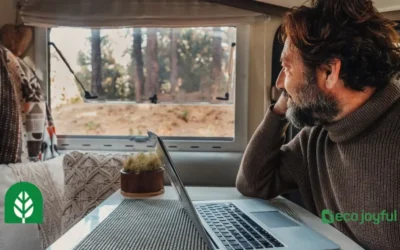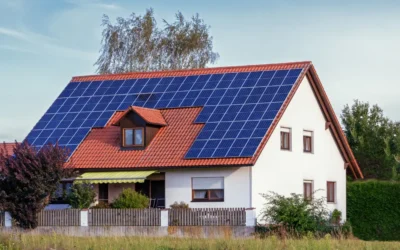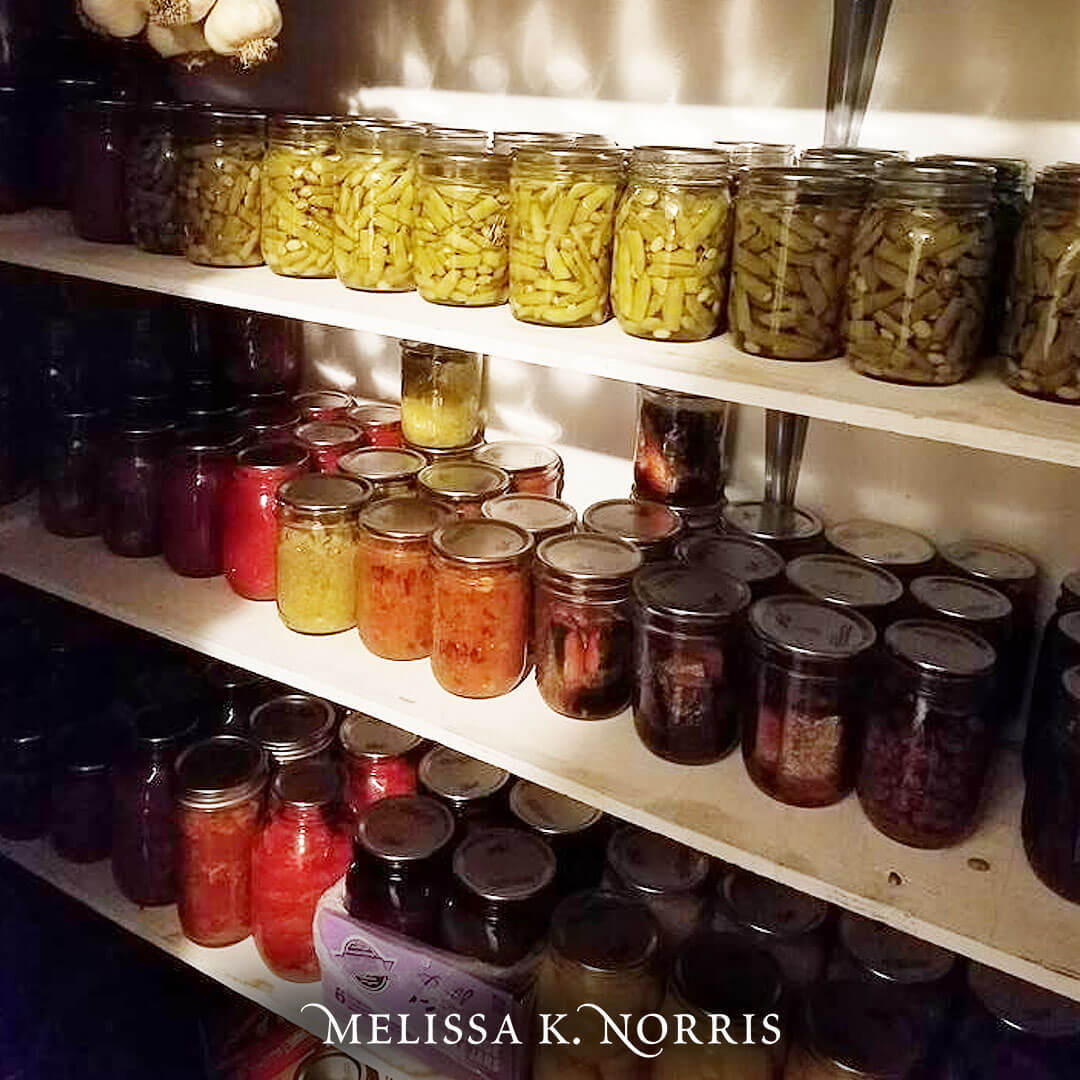Wild edible plants are crucial for off-grid living. They provide a source of food and essential nutrients needed for survival.
Living off the grid means relying on the resources around you and knowing how to utilize them. Wild edible plants provide a sustainable and nutritious source of food that can be found in nature. Learning about these plants and their properties can be essential for anyone living in remote areas without access to modern amenities.
However, it takes knowledge and experience to identify these plants and ensure they are safe to eat. We will discuss the benefits of wild edible plants, how to identify them, and some common examples of plants that can be found in the wild.

Credit: offgridliving.net
Table of Contents
Foraging For Food In The Wild
Discovering wild edible plants can be a crucial skill for off-grid living. Foraging for food in the wild can help you supplement your diet and provide a sense of self-reliance. Knowing which plants are safe to eat in the wild can be a valuable survival tool.
Foraging for food in the wild is essential for off-grid living as it offers a readily available food source that can be easily found and harvested. By understanding the various wild edible plants available in the area and the best time to harvest them, people can live off the land and reduce their dependency on store-bought food. However, before starting to forage, it is essential to learn about the benefits and risks of foraging, as well as the tools required for a successful foraging trip.
Benefits Of Foraging For Food
Foraging for food provides several benefits such as being a cost-effective way to obtain food, helps in building a stronger connection with nature, provides a more diverse and healthy diet, and improves self-sufficiency. Additionally, most wild edible plants are rich in vitamins, minerals, and antioxidants, making them a healthy addition to any meal. Foraging can also be a fun activity for families and a way to teach children about the natural world and the importance of sustainability.
Risks Of Foraging For Food
When foraging, it is essential to be aware of the risks associated with wild edible plants, such as the risk of misidentification and the potential for ingesting toxic plants. To minimize these risks, it is essential to be knowledgeable about the plants in the local area, to be cautious of plants that are not familiar, and to follow safe foraging practices. Foraging for food should never be taken lightly, and it is important to be aware of any potential allergic reactions or toxicity of plants.
Tools For Foraging
To have a successful foraging trip, specific tools are required, such as a good field guide to help identify wild edible plants and a harvesting tool to collect the plants. It is also important to bring along a container to carry the plants, gloves, and a hat to protect from the sun. A portable water filter or water purification tablets should also be carried as a safety precaution. It is important to be prepared before heading out for a foraging trip as it can help to ensure a successful and safe experience.
Foraging for food in the wild is a healthy and cost-effective way of obtaining food, and provides a sense of self-sufficiency. Understanding the benefits, risks, and tools associated with foraging is essential for a safe and successful foraging trip.
Identifying Edible Plants In The Wild
Living off the grid often means relying on nature for sustenance. This is why it’s crucial to know how to identify edible plants in the wild. While foraging for food can be exciting, it’s important to exercise caution and have the right knowledge to avoid any harmful plants.
Common Edible Plants In North America
North America is home to numerous edible plants, and learning to identify them can help you survive in the wild. Some of the most common include:
| Name | Description |
|---|---|
| Wild berries | Edible berries grow in the wild, such as raspberries and blackberries that are rich in antioxidants. Ensure you can differentiate between the edible and poisonous varieties. |
| Dandelion | The entire plant can be eaten, from its leaves to its roots. It can be used in salads and soups, and even brewed like coffee. |
| Wild onion and garlic | Edible plants, they have a strong taste and smell, they can help in adding taste to food and help in digestion too. |
Plant Identification Techniques
Identifying plants in the wilderness can be tricky, but some key techniques can help. Here are a few basic ones:
- Leaves: Leaves can be a useful indicator when identifying plants. For example, dandelion leaves have a distinct yellow hue, while poison ivy leaves have a glossy green appearance and grow in sets of three.
- Stems: Stems can also provide crucial clues. For example, wild onions have a hollow stem, while poison hemlock has a green stem with purple spots.
- Smell: Some plants have distinct smells, like garlic mustard, which gives off a strong garlic scent.
- Seeds: Seeds can be a useful indicator too, like wild berries, which have small, round, and colorful seeds.
Possible Toxic Plants To Avoid
While many wild plants are safe to eat, some can be toxic and cause harm. It’s best to avoid plants you are unsure of, but some plants to definitely avoid include:
- Poison ivy
- Deadly nightshade
- Poison hemlock
- Mushrooms (many varieties are poisonous)
- Jimsonweed
- Water Hemlock
It’s always important to research the plants in your area before venturing out foraging. And, if you think you’ve consumed a poisonous plant, seek immediate medical attention.
Identifying edible plants in the wild is an essential skill every off-grid survivalist should have. With the right knowledge and skills, you can successfully live off the land and enjoy its bounty.
Preparing And Cooking Wild Edible Plants
Being knowledgeable about wild edible plants is crucial for those living off the grid. Preparing and cooking these plants can be a challenge, but with the right technique, they can offer a sustainable source of nutrition.
When living off the grid, knowing how to identify and prepare wild edible plants is an essential survival skill. However, preparing and cooking wild edibles is not as simple as picking them up and eating them. You should follow proper steps to ensure that the plants are safe to eat and delicious to taste. In this post, we will discuss how to clean and store wild edibles, cooking techniques, and some exciting recipes to try out with wild edibles.
Cleaning And Storing Wild Edibles
Before you start cleaning wild edibles, ensure that you have correctly identified them. Some plants might look similar, but only a few are edible. Once you are sure that you have edible plants, it’s time to clean them. Here are some steps to follow:
- Remove any dirt, sand, or debris by washing them under running water or soaking them.
- Inspect them for any bugs or insects and remove them carefully.
- For leaves and flowers, dry them with a paper towel or a cloth, but ensure that they are not crushed or bruised.
- Store them in a clean and dry container or a plastic bag if you are not cooking them immediately. Ensure that the container has a proper lid or is sealed tight to prevent moisture.
Cooking Techniques For Wild Edibles
Cooking wild edibles needs some skills and techniques to transform them into delicious meals. Here are some ways to prepare them:
- Rinse and chop them and add them to soups, stews, or casseroles.
- Sauté them with some oil, garlic, herbs, or spices for a quick and easy side dish.
- Batter and fry them for a crunchy and yummy snack.
- Blend and add them to smoothies or juices for a healthy drink.
- Bake them in pies, tarts, or cakes for a unique and flavorful dessert.
Recipes With Wild Edibles
Here are some delicious recipes that you can try out with wild edibles:
| Recipe Name | Ingredients | Instructions |
|---|---|---|
| Wild Green Salad | Wild greens, olive oil, vinegar, salt, pepper, garlic, onion, tomatoes, cucumbers | Wash and dry wild greens. Chop them into bite-sized pieces. Mix oil, vinegar, salt, and pepper and toss. Add the rest of the ingredients and serve. |
| Wild Blueberry Pie | Wild blueberries, pie crust, sugar, cornstarch, lemon juice | Mix blueberries, sugar, cornstarch, and lemon juice in a bowl. Place the mixture in a pie crust. Bake for 30-40 minutes or until golden brown. |
| Wild Mushroom and Potato Soup | Wild mushrooms, potatoes, onion, garlic, broth, cream | Cook potatoes, onion, and garlic in a pot. Add mushrooms and broth and simmer. Blend the mixture and add cream. Serve hot. |
Conclusion:
Cooking with wild edibles can be fun and exciting once you master the techniques. However, it’s essential to ensure that you follow safety tips and identify the plants correctly. By cleaning, storing, and cooking wild edibles, you can add flavor and nutrition to your off-grid lifestyle.

Credit: www.abebooks.com
Incorporating Wild Edibles In An Off Grid Lifestyle
Incorporating wild edibles in an off grid lifestyle is a great way to add variety to your diet while living self-sufficiently. With the proper knowledge, you can identify and safely consume wild edible plants. This is a sustainable way to supplement your food supply and enjoy the outdoors.
When it comes to off-grid living, it’s essential to find ways to supplement your diet sustainably. Incorporating wild edibles in your lifestyle is a smart and efficient way to get nutritious, fresh produce while reducing grocery costs. Plus, foraging for food is an enjoyable family activity that allows you to connect with nature. In this blog post, we will discuss how incorporating wild edibles can reduce food costs, supplement your diet and help you embrace sustainability.
Supplementing Your Diet With Wild Edibles
Wild edibles are packed full of nutrients and often have a higher nutritional value than their domesticated counterparts. Adding wild edibles to your diet is easy to do, and you don’t need to be an expert or have fancy equipment. Some common wild edibles that you could find in your area include dandelions, chickweed, and plantain, and many more. Incorporating wild edibles in your meals is a fun way to try new foods while enjoying nature at the same time.
Reducing Food Costs With Wild Edibles
Living off-grid means you need to be self-sufficient, and finding ways to reduce food costs is crucial. Wild edibles are free and abundant in many parts of the country, providing an excellent source of fresh food. Incorporating wild edibles into your regular diet can help you reduce your food costs and even eliminate your need for a garden entirely. Even if you’re not living off-grid, incorporating wild edibles into your diet can lead to significant savings and a more sustainable way of living.
Sustainability Of Wild Edibles
Sustainability is becoming increasingly important as we work towards a more eco-friendly future. With wild edibles, you can be sure that you’re eating sustainably. Wild edibles grow naturally, and they don’t require any food production processes that could harm the environment. Additionally, foraging for wild edibles promotes sustainability by helping us to conserve and protect natural habitats. By eating wild edibles, you can reduce food waste and packaging waste, leading to a more sustainable world.
In conclusion, incorporating wild edibles into your off-grid lifestyle is an easy and sustainable way to supplement your diet while saving money. You can discover new delicious foods while connecting with nature and promoting sustainability. So, get out and start foraging for some wild edibles today!
Challenges And Considerations Of Wild Edibles In Off Grid Living
Living off grid presents challenges when sourcing wild edible plants. Considerations such as proper identification, sustainable harvesting, and preparation are crucial for survival. With proper education and caution, wild edibles offer a valuable source of nutrition in remote living situations.
Availability And Seasonal Changes
Finding wild edible plants can be quite challenging, especially in areas where there is less rainfall or vegetation growth. Certain plants also have specific growing seasons, so it is essential to gather knowledge about what plants are available in your region and when they can be harvested.
You also need to consider how much time and effort it takes to find and collect wild edibles, as it is not always an easy task. Additionally, it is important to be aware of any potential hazards in the area, such as poisonous plants or dangerous wildlife.
Food Safety And Hygiene
When consuming wild plants, it is crucial to know what you are eating and whether it is safe to do so. Some plants can be toxic or cause severe reactions, so it is best to research your local flora to ensure that you are not putting yourself in danger.
It is also important to follow safe harvesting practices and properly sanitize and prepare the plants before eating. Off grid living often means a lack of access to clean water or refrigeration, making it even more challenging to maintain good hygiene and food safety practices.
Environmental And Legal Considerations
Gathering wild edibles should always be done with the environment in mind. You should only collect what you need and avoid damaging the surrounding ecosystem. It is also important to consider any legal issues surrounding foraging in your region, as some areas may have strict regulations or protected species.
Overall, while there are plenty of benefits to foraging wild edibles in your off grid living situation, it is crucial to carefully consider all the potential challenges and risks involved before venturing out. By taking the time to educate yourself and follow safe practices, you can enjoy the abundance of nutritious food that nature has to offer.

Credit: www.amazon.com
Conclusion
There’s no denying the benefits that wild edible plants can offer for those living off the grid. From added nutrition to cost-effective and sustainable sources of food, these plants are a valuable resource. However, it’s essential to take the necessary precautions to identify and consume them safely and responsibly.
By educating ourselves on the various types of wild edible plants available in our environments, we can reap the rewards of living off the grid and feel confident in our ability to nourish ourselves and our families.









